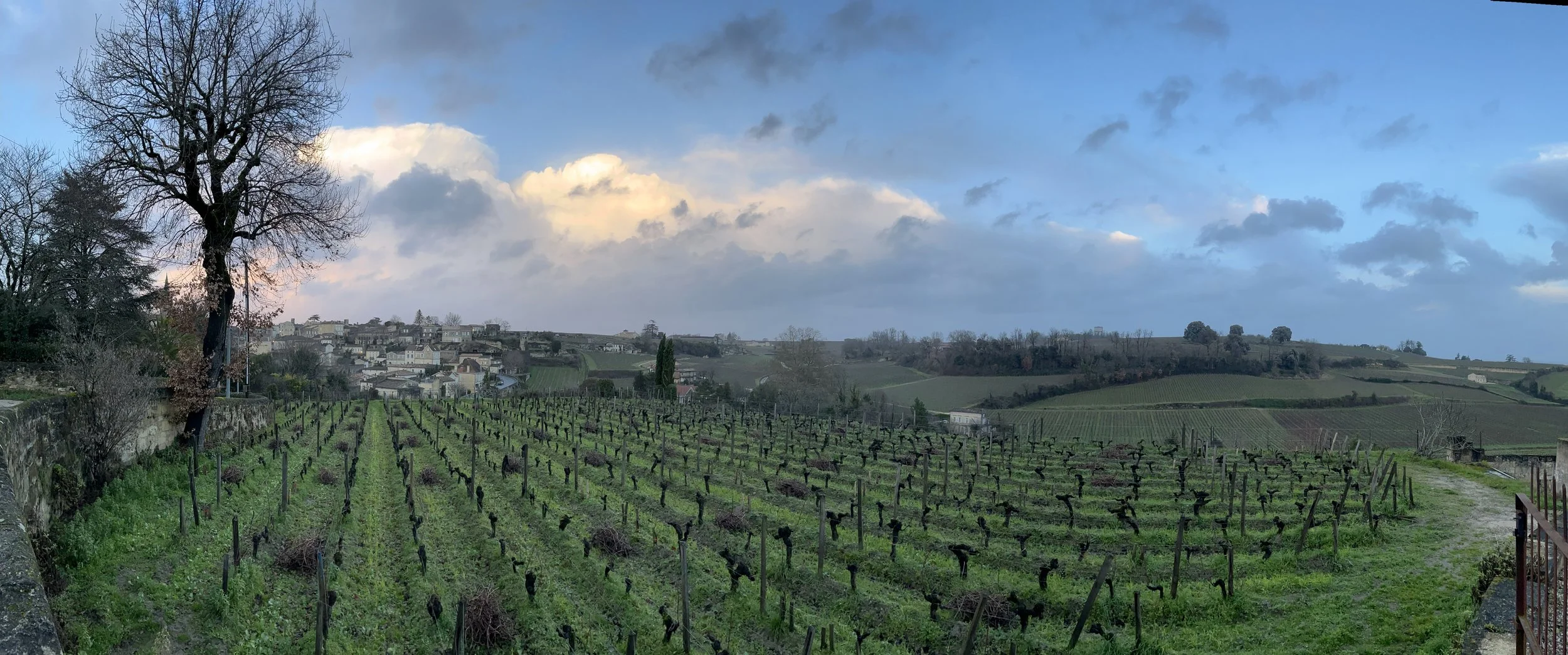3e Pensée: The “Terroir” of the Vineyard to the “Terroir” of the Heart
at Château de Pressac, Saint-Émilion, 29 January, 2025
There’s a notion in the world of wine that transcends mere geography or the technicalities of winemaking. It is the quiet, profound idea of terroir. That simple word carries within it the essence of the land, the climate, the vines, as well as the many human hands that nurture them. It is l'esprit du lieu, the sense, or rather the spirit of the place where nature and craft meet, forming the cradle where the soul and essence of a wine is born.
A vigneron, will tell you that terroir is not just the environmental factors in the vineyard where grapes for wine is produced; the soil or the climate, - it is the relationship between all the elements—the welcome gentle rains, the warming sun, the cooling winds; as well as the threateningly harsh frost, hail, floods, and droughts - all alongside the stories of the calloused hands that tend the vines: here, in this unique spot of the planet. It is the way these forces, at once mighty and delicate, impart a unique fingerprint onto the grapes, which, in turn, impart that same essence onto the glass we hold.
As the poet W.B. Yeats once wrote, “The world is full of magic things, patiently waiting for our senses to grow sharper.” And so, terroir is the canvas upon which the artist, the winemaker, paints with the brushstrokes of seasons. The vigneron carries on his craft with unspoken reverence that beneath our feet lies a hidden world, a tapestry woven from ancient soils, a breath of wind that crosses fields, and the quiet hum of time passing sharpening our senses. Every vine he sees that stretches toward the sky carries this magic - its own ancestors have witnessed years, or perhaps centuries of history: the rise and fall of governments, revolutions, war, and peace shaping the hands that cultivate it- and it is in the glass, in the wine, that we sense its full complexity. And so, a bottle of Cabernet Sauvignon becomes Napa Valley, a Sauvignon Blanc - Sancerre, a Sangiovese is a Chianti, a Pinot Noir becomes Bourgogne.
What makes terroir so poetic, so sacred, is that it cannot be replicated. It is the land’s unique song - sung in a dialect that no other place can speak. In the vineyards of Saint-Émilion, for example, the terroir sings through the earth itself. Here, the soil is rich with clay and limestone, and the deep roots of Merlot stretch and twist like the ancient stories told by the land, by the legend of the miracle-working monk who has taken his refuge of solitude in the cave and the pilgrims that followed after. These were the stories that the present-day vintners heard at bedtime in their childhood, as their parents did at theirs, and their parents’ parents before them. And across the River Dordogne, a different song: the sun-soaked flat expanse of Bordeaux’s Left Bank, with their gravelly soils, once a flooded marshland, create Cabernet Sauvignon that are bold, complex, and assertive. These wines, like the landscape that birthed them, are built to last—rooted in the earth, shaped by the unpredictable weather, and carved by the hand of tradition represented by the magnificent, regal chateaux that proudly stand in silent vigil overlooking the land. Yet, in their boldness, they offer grace. In their intensity and grandeur, they hold softness. In both regions, the different shades of varietals are masterfully blended on the artist’s palette, before it graces the easel of a taster’s palate. And so, to one who acknowledges terroir, a sip is not merely a flavor; it is the wine’s memory of centuries passed, a snapshot of a specific time, a moment of perfect balance between nature’s forces and human artistic intention.
A view of Saint-Émilion, from Château Ausone. 28 January 2025.
In the pursuit of understanding terroir, we also come to understand something deeper about ourselves. Just as a wine reflects the land from which it comes, so too do we reflect the experiences and environments that shape us. Our own “terroir" is an amalgamation of the places, people, and moments that have left their impressionable, unrepeatable mark on us. Like the vines that stretch toward the sun, we are ever-reaching, ever-evolving, shaped by the conditions in which we grow: drawing from our childhood memories; the nurture of our parents (or perhaps, lack thereof), the memory of family gatherings, the piano in the living room - slightly out of tune; our neighborhood where we first came into encounter with the outside world; our childhood pet. The stories we’ve heard at bedtime shaping our dreams at sleep and our imaginations upon waking. We draw too from our first recognitions of love - the experiences of its return, as well as rejection. Our experiences of people entering our lives, and their departures; of innocence lost - and regained. And so, within the art of living—l’art de vivre—is knowing how to reverence and cultivate our own terroir, how to continue to root ourselves deeply in what is truly meaningful and lasting, how to absorb into our being and authentically reflect the beauty and imperfection of our experiences - at the same time recognizing that who we are, our words, our affection, our fleeting existence, becomes part of the terroir of another. For wherever we are, we leave an imprint. Just as wherever we go, we carry a place within us.
Let us toast to that terroir—the moments that define us, the struggles that refine us, and the joys that enrich us. To a life lived with intention, grace, and the quiet elegance of time well spent. Santé, to the joie de vivre, to the terroir we cultivate with every choice we make, and to the legacy we leave in every step we take.

